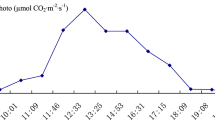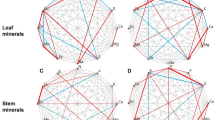Abstract
Hibiscus sabdariffa, L., is one of the most important fibre plants of India, commonly known as roselle fibre. There are several Well-known varieties1. The plants can be grown on all types of soils, and hence the economic possibilities are considerable. A study of photoperiodic effects was undertaken in May 1951, since the strain was found to grow best when sown during May–June.
This is a preview of subscription content, access via your institution
Access options
Subscribe to this journal
Receive 51 print issues and online access
$199.00 per year
only $3.90 per issue
Buy this article
- Purchase on Springer Link
- Instant access to full article PDF
Prices may be subject to local taxes which are calculated during checkout
Similar content being viewed by others
References
Howard and Howard, Memoir Dept. Agric. Ind., Bot. Series 4, 9 (1911).
Bolhuis, G. G., Landbouw, 16, 404 (1940).
Ergle, et al., J. Amer. Soc. Agron., 37, No. 2 (1945).
Author information
Authors and Affiliations
Rights and permissions
About this article
Cite this article
TALUKDAR, S. Photoperiodic Behaviour of Hibiscus sabdariffa, L.N.P.5. Nature 170, 458–459 (1952). https://doi.org/10.1038/170458a0
Issue Date:
DOI: https://doi.org/10.1038/170458a0
Comments
By submitting a comment you agree to abide by our Terms and Community Guidelines. If you find something abusive or that does not comply with our terms or guidelines please flag it as inappropriate.



